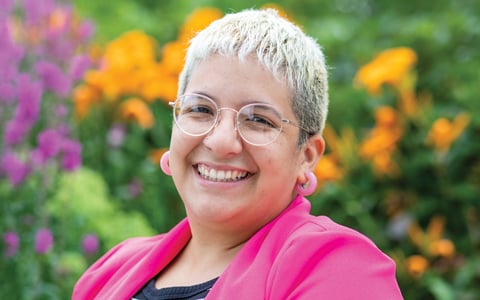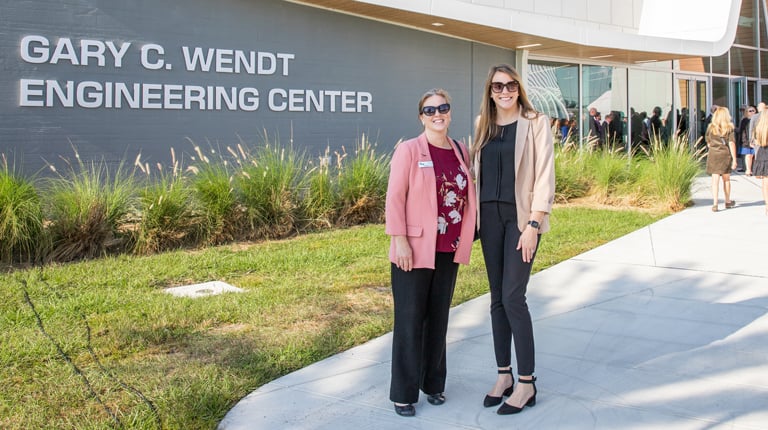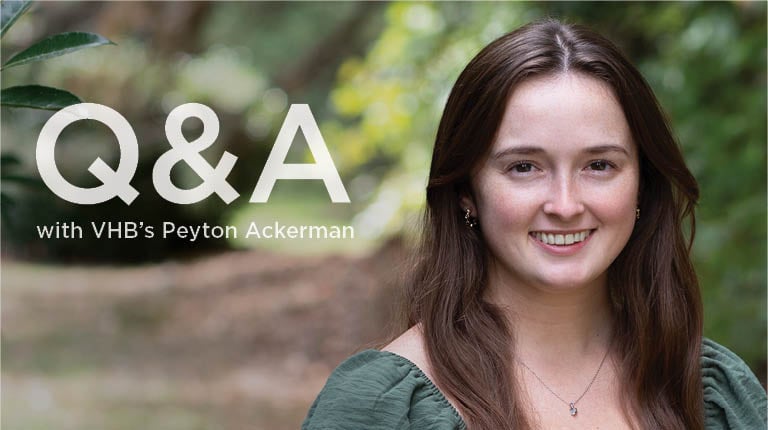
Generative AI is making its mark across creative industries, and landscape architecture is no exception. From rapid visualizations to site-specific planting suggestions, these tools enable designers to unlock ideas faster, communicate more clearly, and adapt to changing site conditions in real-time.
We spoke with Ashley Crespo-Calamia, a Landscape Designer at VHB, about how AI is transforming the way we design outdoor spaces, where its real strengths lie, and why curiosity is still a designer’s most powerful tool.
VHB: Let’s start with the basics. What does generative AI offer that traditional tools don’t?
Ashley: It’s helping us move from ideas to visuals much faster—and in more creative ways. We still begin projects with hand sketches and iterative drawing, but AI complements that process by letting us rapidly explore mood, form, and spatial qualities. That means clients can experience a sense of place much earlier in the design process.
Beyond visuals, we’re also using AI to suggest plant palettes, spot gaps in seasonal variety, and recommend species based on real site data like sun exposure, soil type, and slope.
For me, the real power of AI is in how it helps us think. It’s not just about what it creates, but how it pushes our process forward.
VHB: Can you share a real-world example of how that plays out on a project?
Ashley: On a recent project involving an industrial warehouse adjacent to a residential community, we had a site plan but no building design yet. The client needed help visualizing what was possible before bringing on an architect.
We used AI to explore different façade styles, feeding it reference images, past projects, and aesthetic cues. Once we landed on a direction, we built a model in SketchUp, rendered it in Lumion, and brought AI back in to refine lighting, materials, and planting.
The result was a cohesive visual story that gave the client clarity and confidence. It also sparked some important questions early on—about scale, sightlines, and circulation—that helped shape the site layout.
VHB: That’s impressive. But it can’t all be smooth sailing. What limitations have you run into?
Ashley: One of the biggest challenges is how literally AI interprets prompts. I once asked it to “replace them with chairs” in a plaza rendering and it turned people into chair-shaped figures. Funny, but also a reminder to be super specific with language.
There’s also consistency. Every AI platform behaves a little differently, so you can’t always count on the same result twice. We’ve learned to document workflows carefully and embrace trial and error.
And when it comes to planting, AI still has a lot to learn. It might suggest combinations that don’t make ecological sense or miss seasonal details. So we treat AI-generated visuals and content as a first pass, then go back, refine, and layer in accuracy depending on project needs. That way, we keep the inspiration without losing clarity or intent.
VHB: Looking ahead, what other tech trends do you see shaping the field?
Ashley: Data-informed design is becoming more and more central. As AI tools continue to integrate with GIS, remote sensing data, and live site conditions, we’ll be able to bring real-time site intelligence into daily workflows in ways that weren’t possible before.
Climate change is also driving innovation. We’re experimenting with adaptive planting strategies and using embedded sensors to monitor soil moisture, temperature, and runoff. The goal is to design landscapes that respond dynamically to changing conditions, not just fixed seasonal routines. Longer term, I see opportunities to automate these systems so site-specific data directly informs maintenance, moving us from static installations to living landscapes that evolve and thrive.
VHB: What advice would you give to designers who are curious about AI but unsure where to begin?
Ashley: Don’t overthink it. Start with something you know, something familiar. An image, a body of text and push at the limits of the interface. The final product does not have to “be something.” In fact, the first few products don’t have to be anything at all. The goal is simply to give yourself permission to explore potential before applying it to a project. Find joy in experimenting.
And truth is, we’re all learning as we go. These tools are evolving quickly, and that’s part of the fun. Every week there’s something new to explore, and that shared learning is what makes this moment so exciting in design.
Connect with Ashley Crespo-Calamia to learn more about our Landscape Architecture services and explore how creativity, sustainability, and technology can work together to shape outdoor spaces that thrive.


